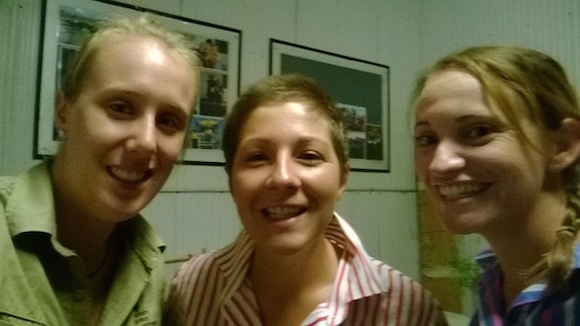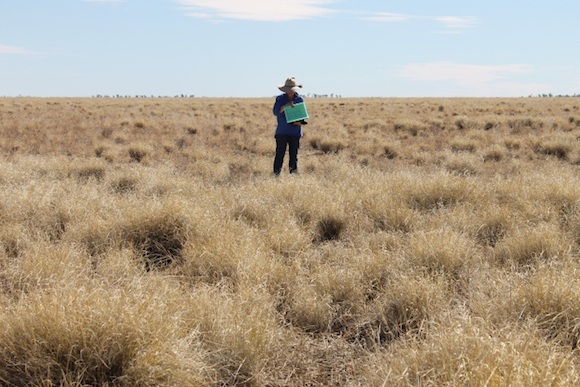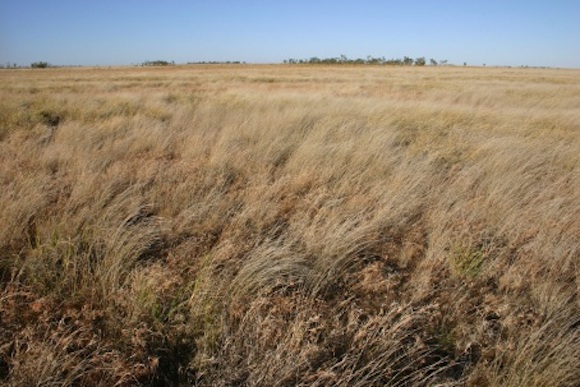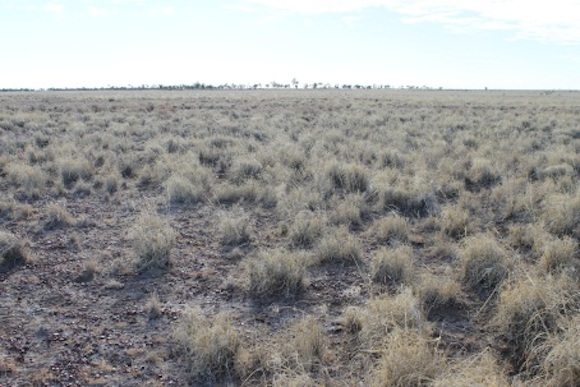Word on the Barkly Breeze!
Host: Katherine Research Station
Written by Helen McMillan – Pastoral Production Officer – DPIF.
Hi! I’m Helen McMillan and I’ve been with the Department of Primary Industry and Fisheries in Tennant Creek for almost 12 months now. Originally I’m from Deniliquin (southern NSW), but after completing a degree in Rural Science I really wanted to stretch my wings and experience something completely different – and now I find myself in the great TC! My official job title is ‘Pastoral Production Officer’ which means that I get to do a lot of grass counting. Which is great. I love it. Always. Point me at it. Like an Irish Setter at a duck on the pond. Love it.
 Meg (L), me (C) and Jodie (R), all geared up to present one of our Rangeland Management Courses. Note: I have almost 2 months of hair on my head after taking on the clippers for the World’s Greatest Shave in March this year!
Meg (L), me (C) and Jodie (R), all geared up to present one of our Rangeland Management Courses. Note: I have almost 2 months of hair on my head after taking on the clippers for the World’s Greatest Shave in March this year!
Now that we have established that I might have a touch of cabin fever, let me tell you a bit about what is going on out here on the Barkly. A project that I have been fortunate to be involved in is the “East Ranken stocking rate and spelling demonstration site” on Alexandria Station, which is assessing the effect of bore age on pasture dynamics and the response of the pastures to wet season spelling. There are three bores that we are looking at – No. 10 which was established in 1910, No. 124 was first used in 2005 and No. 153 which was first used in 2010.
Every year since 2010, DPIF staff members have come out to Alexandria around June after the pastures have finished growing to monitor the area around these three bores. Things that we look at include the plant species that are present, the frequency of these species in the landscape and the condition of the soil in these areas as well. All up we take approx. 130 observations at each bore, working in a straight line, moving away from the bore for 5km taking observations as we go.
 Me out in the paddock trying to work out what I am looking at!
Me out in the paddock trying to work out what I am looking at!
Why 5km I hear you ask?! Well, out on the Barkly black soil plains where the horizon is uninterrupted by woody vegetation for miles around (see above photos!), it is estimated that cattle will walk 5km from the watering point before turning around and walking back in for water. Effectively this means that only the plants within 5km from a water source can be considered ‘available’ as feed for cattle. So although the paddock might be monstrous in terms of size (a typical paddock on the Barkly is 218km2) if there is only one water source in the entire paddock then that realistically means that only the plants within that 5km radius from water can be counted as feed!
 Some of the lovely composite cows in the trial paddock at Alexandria Station.
Some of the lovely composite cows in the trial paddock at Alexandria Station.
 HELLO!! Is anyone in there? Such quiet and curious animals!
HELLO!! Is anyone in there? Such quiet and curious animals!
But traipsing around a paddock looking at grass really doesn’t sound that fascinating I hear you say! Well it is what we can do with this information that is the interesting part. Also trust me in saying, after you have spent the wet season cooped up in an office looking at a computer screen, ANYTHING outside is like heaven (Even with the Barkly Breeze trying to blow you away!).
Back to the story! So we take this information and can use it to estimate total pasture yields. One Adult Equivalent (AE) eats between eight and ten kilograms of dry matter per day, and this value is different depending on the class of animal. It is very important to know these figures so a paddock’s stocking rates can be estimated so as not to overstock and keep animals and pastures in tip top condition!
What this means for No. 10 bore: so it has an extensive history of grazing (>100 years old!), previous and current managers are investigating means of rejuvenating the health of the land immediately surrounding it. This involves wet season spelling which done by turning water off, relieving grazing pressure and hopefully encouraging good pasture growth.
What this means for No. 153: so this is the youngest bore (~five years old) and currently it is in really good condition and we hope a wet season spell will maintain its good condition and good pasture growth.
 Bore 153 has only been in use approximately five years. This photo was taken 100m from water in 2011. Photo monitoring is just one of the techniques we use to be able to make comparisons from year to year.
Bore 153 has only been in use approximately five years. This photo was taken 100m from water in 2011. Photo monitoring is just one of the techniques we use to be able to make comparisons from year to year.
 This photo was taken in the same location as the one above just two years later. The lack of rainfall during the previous wet season has had a significant effect on the pasture.
This photo was taken in the same location as the one above just two years later. The lack of rainfall during the previous wet season has had a significant effect on the pasture.
So to finish up I will answer one more of your (possible) questions – why do I love my job? Well although Tennant Creek may not seem to be the most desirable place to live in Australia, I feel being out here I actually have more opportunities than I would in a job back East. Not only do I get to get out of the office and count grass (as exciting as it sounds it is not all that bad!), I get to travel all across the NT, from Alice Springs for field work, to Darwin for courses and almost everywhere in between. I get to write articles for our local newsletter (Barkly Beef) and help with the local show. I even get to do extension work helping to run and present courses to station staff about the cattle and the rangelands (AKA – grass!). I get to be a part of something big and hopefully through our work, partnered with other organisations and the Northern beef producers, we can work together to keep this industry on the forefront.
So that’s me and a little of what is going on out here on the Barkly! You will have to excuse me now please, as I have an article to finish writing for the next edition of Barkly Beef and field work to prepare for (YAY I’m getting out of the office again!).
Cheers,
Helen
